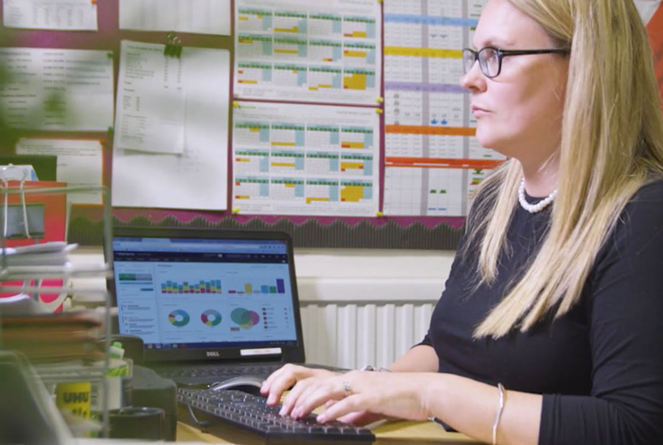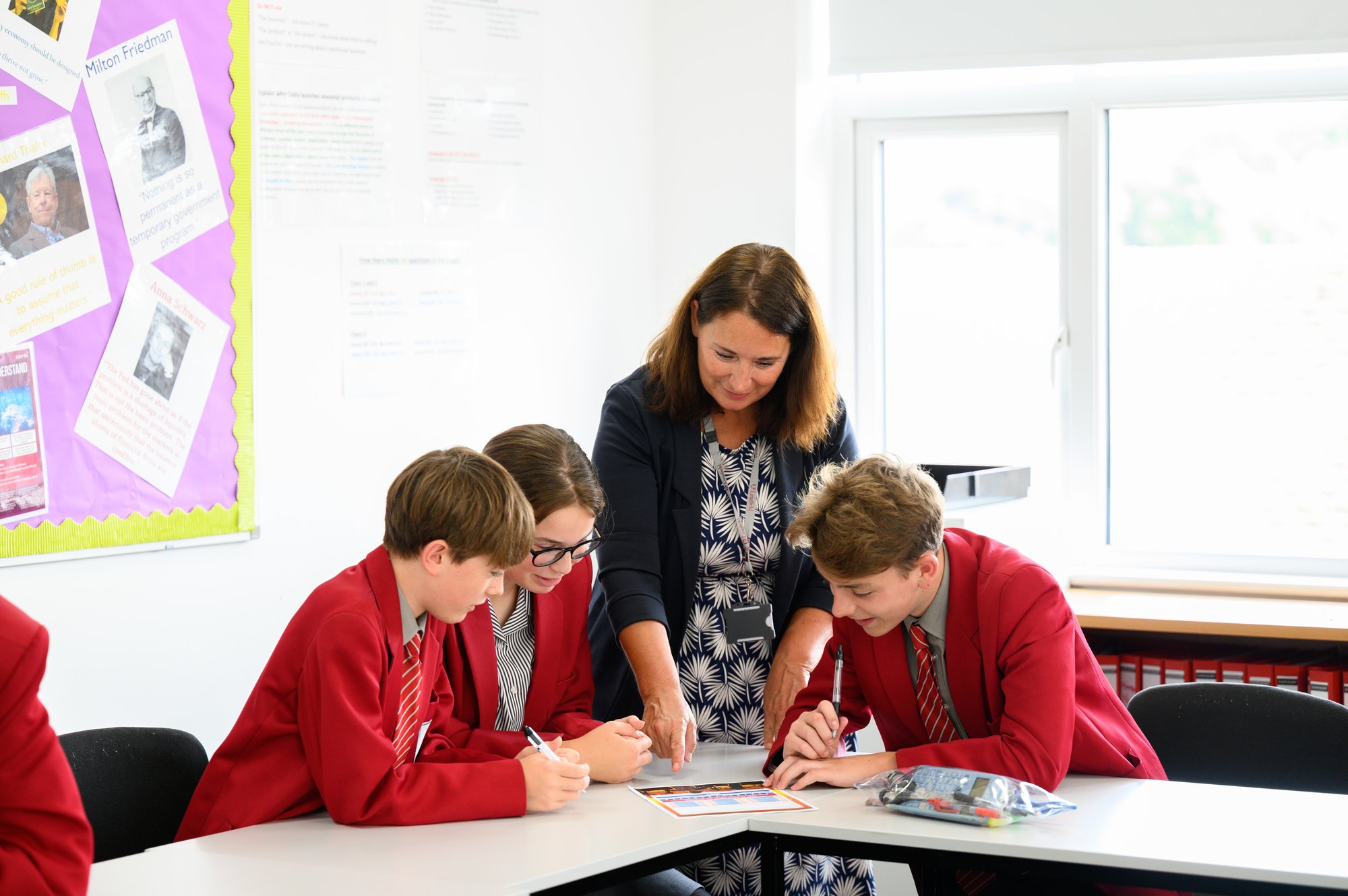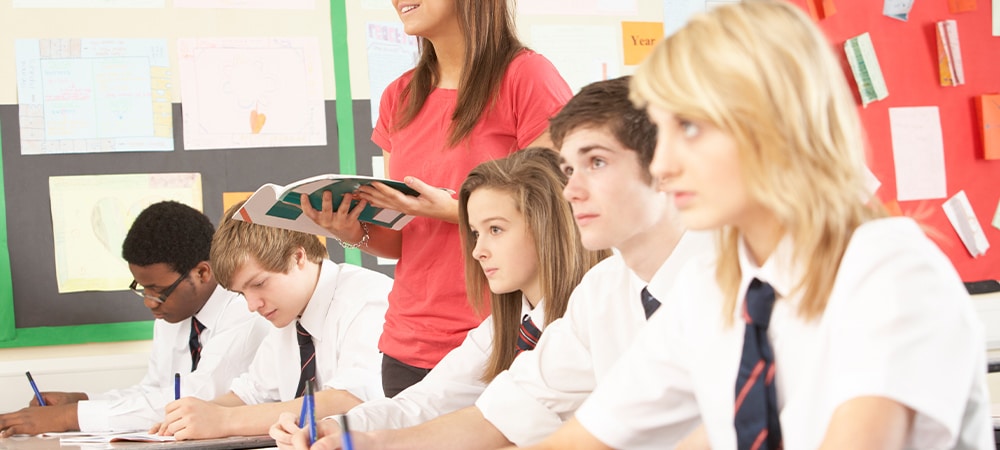12th February 2021 – The largest report into the impact of the disruption caused by the pandemic on primary school children has been released today and shows that children in Year 1 have experienced the greatest drop in their learning. Younger children also took longer to recover lost learning when they returned to school in September 2020.
The ‘Juniper Education National Dataset Report, February 2021 – The impact of the Covid-19 pandemic on primary school children’s learning’ examines teacher assessment data from more than 6,000 primary schools representing 1.47 million pupils.
It looks at the percentage of pupils achieving, or exceeding, what is expected for their age (age related expectations) for Years 1 through to 6 in reading, writing and maths, in comparison to pre-pandemic levels. It also examines what effect children’s return to school from September through to December 2020 had on their learning.
The report reveals that although all year groups have struggled to reach age related expectations due to the pandemic, it is the youngest children whose learning has had the most significant drop. Prior to the pandemic 82% of Year 1 pupils achieved age related expectations in reading, 79% in writing and 83% in maths, By the summer term of 2020 these figures had dropped to 60%, 54%, and 59% of pupils respectively.
Frazer Westmorland, headteacher of Mundella Primary School in Kent, said: “Younger pupils have certainly been the most affected from their time away from the classroom. A lot of skills such as how do I learn, listen and collaborate are developed at school. They provide the building blocks which allow for progress in learning. Many children have had fewer opportunities to embed these skills at home. It means, we need to go back to basics with younger year groups to build these skills before we can help them progress.”
With worrying implications for the attainment gap, disadvantaged pupils fared worse than their non-disadvantaged peers. By summer 2020 across all primary year groups only 43% of disadvantaged pupils (those who qualified for pupil premium) had met age related expectations for reading compared to 63% of non-disadvantaged groups. For writing it was 36% as opposed to 55% and for maths 41% as opposed to 61%.
The report also covers assessment data for the period when children went back to school full time (Sept-Dec 2020) and found that recovery was slower for younger children than their peers. SEN children and disadvantaged pupils also struggled more to make up lost ground, suggesting that a special focus needs to be placed on these groups as all pupils return to school after lockdown 3.0.
There are some encouraging signs and older age groups made up lost ground on the return to school with Year 6 children able to close many of the gaps in their learning. An encouraging 74% achieved age related expectations in reading by the 2020 Christmas break, 67% in writing and 71% in maths. This is just a few percentage points behind 2019 pre-pandemic levels of 78%, 72% and 77% respectively.
Report author and former primary head, Stephan Nicholls, who works as an education consultant for Juniper Education, said: “To put an effective recovery plan in place, we must know which children have suffered the most from the pandemic. This report will help those that work in education understand where the greatest learning losses are so they can effectively direct their teaching when the school gates are fully open again.
“Although the report will make difficult reading for many, there is hope in these findings too. It will be a huge comfort to parents to know that when children are back in front of their teachers, they can make up for lost time. But we must make sure that children with additional barriers to learning are given extra support so they are not left behind.”
A summary of the most interesting findings from the report:
- The number of children in Years 2 to 6 who were achieving at or above the standard expected for their age dropped by approximately one fifth between autumn 2019 and summer 2020.
- Mathematics was the subject most affected.
- The pandemic has disrupted the progress of Year 1 more than any other pupil group, with the percentage of children achieving at or above expectations falling by around a quarter.
- There was a more pronounced drop in the proportion of disadvantaged pupils working to expected levels for their age than for their non-disadvantaged peers, with Year 1 worst affected.
- Numbers of Year 1 children with SEN working at the expected levels for their age in maths and writing dropped by almost a third.
- Younger children have recovered more slowly. The increase in percentages of children in Key Stage 1 who were working at expected levels after the return to school in autumn 2020 was much smaller than for children in Key Stage 2.
- Fewer disadvantaged children had returned to working at expected levels than non-disadvantaged children after they were back in school in autumn 2020.
- In addition, fewer children with SEN had returned to working at expected levels than their peers by autumn 2020.
- Year 6 was the most resilient year group with a smaller drop in attainment and greater rates of recovery after the return to school.
Along with the report, Juniper Education has launched an online analysis tool which will allow any school in the country to compare its reading, writing and maths assessment data with schools around the country. Schools simply log on and submit their own assessment results to benchmark them against the Juniper Education National Dataset. To access the tool visit: https://junipereducation.org/resource/downloads/national-dataset-analysis-tool/
Methodology
The Juniper Education National Dataset collects anonymised teacher assessment data from schools which use its pupil tracking solutions, to give percentages of pupils who are achieving, or exceeding what is expected for their age (age related expectations).The teacher assessment data is taken from more than 6,000 primary schools representing over 1.47 million pupils, and was collected at three datapoints:
- Autumn 2019 – which provides an indication of attainment pre-pandemic.
- Summer 2020 – which offers some insight into the effect of the first lockdown.
- Autumn 2020 – which covers the period of time when schools reopened.
The numbers of pupil assessed at each of these datapoints were as follows:
| Cohort – Number of Pupils Assessed | |||
| Reading | Writing | Maths | |
| Autumn 2019 | 858709 | 862436 | 861902 |
| Summer 2020 | 147276 | 143158 | 147226 |
| Autumn 2020 | 645674 | 641486 | 646949 |
For each datapoint, attainment data was broken down into the following pupil groups:
- Year group
- Pupils with an identified SEN
- Disadvantaged pupils – those who qualify for Pupil Premium which includes looked after pupils, and pupils who have received free school meals at any time in the last six years.
Data validation
To validate the data externally, Juniper Education compared the percentages of pupils working at or above expected levels for their age with national statutory assessments at the end of reception and Key Stage 1.*
This revealed a close correlation between the Juniper Education teacher assessments and the national statutory assessments.
The validation shows that teacher assessment is a reliable way to evaluate primary school pupils which offers reassurance at a time when national statutory assessments have been withdrawn due to the pandemic.
The comparison also proves that the data in this report is robust and allows us to draw valid conclusions on pupil attainment.
* This included the Early Learning Goals statutory assessment for Key Stage 1 pupils, and end of Key Stage 1 teacher assessment for Key Stage 2 pupils.
For further information and to arrange interviews, please contact:
Louise Everett, The Influence Crowd (on behalf of Juniper Education). louise@theinfluencecrowd.co.uk Tel: 07855 257927.
Ends.
Notes to the editor:
- Report author, Stephan Nicholls of Juniper Education and Frazer Westmorland, headteacher of Mundella Primary School, are available to interview.
Juniper Education
Juniper Education’s aim is to increase the effectiveness of schools, improve outcomes for learners and give teachers back more child-time. The organisation provides primary and secondary schools with software to bring pupil assessment, attendance, behaviour data and more together into one system. Juniper Education also offers services to support schools with their financial management, teacher training, HR, governance, compliance, and school visits planning. The company is backed by Horizon Capital, a leading investor in high-growth technology and business service companies.


/Primary%20school%20.jpg?width=2000&name=Primary%20school%20.jpg)








.png?width=940&height=788&name=Lingfield%20College%20Case%20Study%20(5).png)
-1.png?width=1000&height=833&name=National%20Association%20of%20Head%20Teachers%20(3)-1.png)
-3.png?width=1080&height=1080&name=Untitled%20design%20(10)-3.png)





